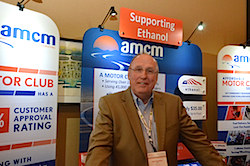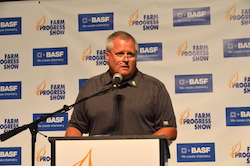Researchers in Canada might have found a way to increase biodiesel production by using bubbles. This article from McGill University’s The McGill Daily says Peter Adewale, a PhD student in the school’s Bioresource Engineering Department, has devised a method to shorten the production time of biodiesel to twenty minutes, a significant drop from previously reported production times ranging from 24 to 96 hours.

The biodiesel was made from inedible tallow – a type of animal fat – using enzymes as a catalyst, and the bursting of bubbles formed by ultrasonic waves, a process known as ultrasonic mixing, to speed up the process…
Adewale tells The Daily, “When you are using edible canola oil, you are competing with human [consumption]. Down the road, it will lead to either high cost or scarcity.” To become a more viable alternative fuel, biodiesel would need to be made from non-edible sources such as animal fat waste, generated by the meat processing industry and tanneries.
Originally, Adewale was interested in creating models of the interactions of methanol and animal fat to see how those two reagents mix with each other to produce biodiesel. According to Adewale, after spending two years trying to learn how to use the modelling software COMSOL, he was told by the software’s producers that what he was trying to do was simply not possible. The level of modelling needed to simulate the particles mixing was too complicated, given the software that was available at the time. “Eventually, I had to drop the idea,” Adewale explains.
And so, two years into what he had hoped would be a three year PhD, Adewale decided to try an experimental approach, since dropping his theoretical modelling approach. He started by studying the characteristics – like the free fatty acid content and melting points – of different animal fats, such as tallow, lard, choice white grease, and yellow grease, all of which could be used to make biodiesel.
Adewale found tallow was conducive to ultrasound mixing and eliminated the use of some caustic catalysts.










